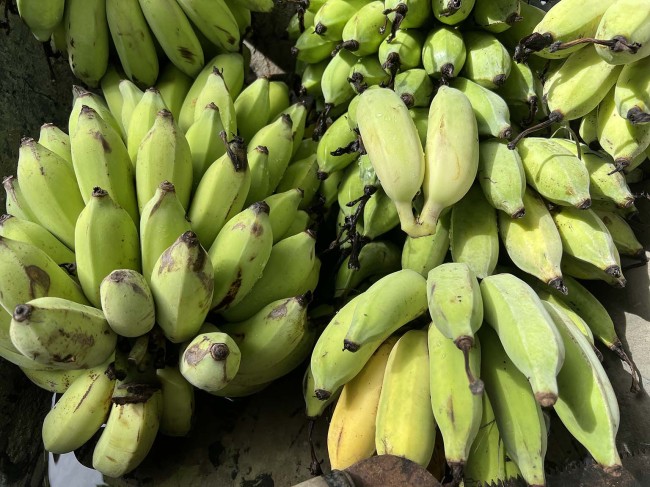A Tastebud Tour Around Hawaiʻi: Local Fruit

Hawaiʻi’s generally tropical climate has allowed a plethora of flora and fauna to thrive. The islands are home to many indigenous species, which offers flavors that can only be found among this colorful ecosystem. While the islands do contain some delicious tropical fruits such as dragonfruit and coconut, also treat your tastebuds to its diverse selection of lesser-known natural sweets.
Lilikoʻi
Lilikoʻi, also known as passionfruit, is a tropical fruit with gooey seeds that hold a sweet yet tart flavor. In Hawaiʻi the two most popular varieties are yellow and purple, stemming from the color of the flower they arise from. You can eat it raw or use it to make pastries, drinks, and candy – whatever your heart desires. One of my personal favorite usages is putting lilikoʻi in lemonade. The tartness of the fruit compliments the sweetness of the drink perfectly.

ʻUlu
ʻUlu, also known as breadfruit, is a green fruit with white flesh that tastes more similarly to a root vegetable. It is a part of the mulberry and jackfruit family that originated from the Philippines and spread to Hawaiʻi during the Austronesian expansion. ʻUlu is a great meat substitute, for it has plenty of protein and a rather malleable flavor. I love some good ʻulu fried rice or creamy ʻulu curry.

Starfruit
Starfruit, or carambola, gets it name from its star-shaped appearance when it is cut into slices. Native to tropical Southeast Asia, this cute tropical fruit has a subtly tart flavor. Although packed with fiber, antioxidants, and vitamin C, starfruit also has a component known as oxalate, which can increase the likelihood of kidney stones. This shouldn’t be something to worry about too much, as most of it is neutralized during the digestion process, but consume starfruit in moderation.

Papaya
As one of my personal favorites, papaya is large fruit with an abundance of creamy, orange flesh. The flavor is rather unique, but comparable to a cantaloupe if it was richly sweet and soft. Papaya was first domesticated in Mesoamerica, but now grows in a handful of international tropical climates. It is used in an array of desserts and drinks, but one of my preferred methods of consumption is cutting it in half and digging in with a spoon.

Latundan Bananas
While these bananas may look like just a shortened version of the classic yellow, the Latundan, or apple, variety is much different. Bred originally in the Philippines, these fruits have a creamier, less fibrous consistency than its larger competitor. The flavor is similar to a regular banana, but the floral aroma of the flesh concocts faint nodes of pineapple, apple, and even strawberry. If your Latundan banana browns, do not fret; it is simply a sign of the flavor changing from tangier to sweet.

Where to find them
As many of these fruits are not nearly as common as apples and oranges, you sometimes will not be able to find them in grocery stores. Luckily, Oʻahu has an abundance of farmers markets and local vendors rich with fresh crop.
- Kapiʻolani Community College Farmers Market – 4303 Lēʻahi Head Rd, Saturdays from 7:30am-11am
- Honolulu Farmer’s Market – 777 Ward Ave, Wednesdays from 4pm-7pm
- Kekaulike Market Chinatown – 1039 Kekaulike St, seven days a week from 7am-3pm
Even with Hawaiʻi offering a delicious cooked cuisine, sometimes, nothing tastes better than mother nature’s own kitchen. Although pineapples and mangos are a staple for stereotypical Hawaiian sweets, Hawaiʻi’s other local fruits are as underrated as they are delicious.






























You must be logged in to post a comment Login